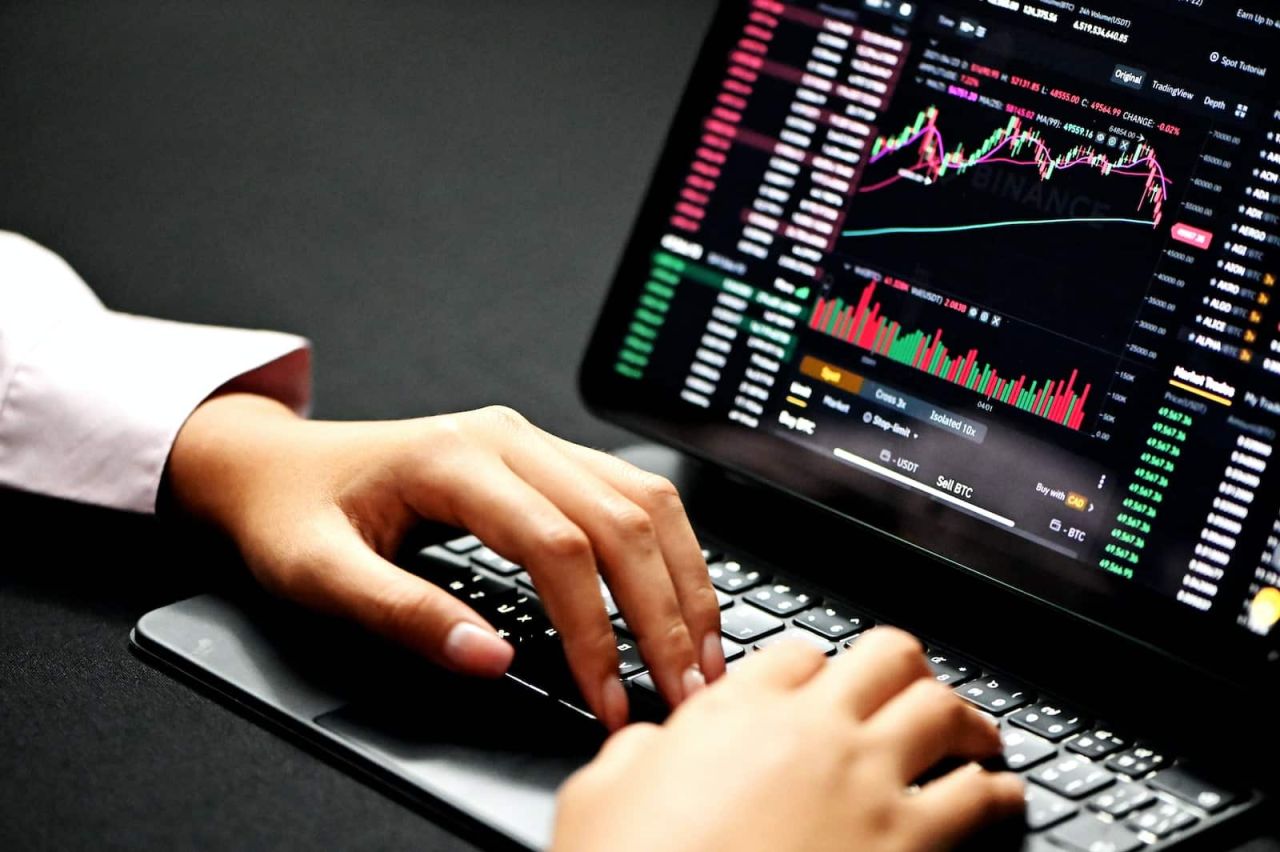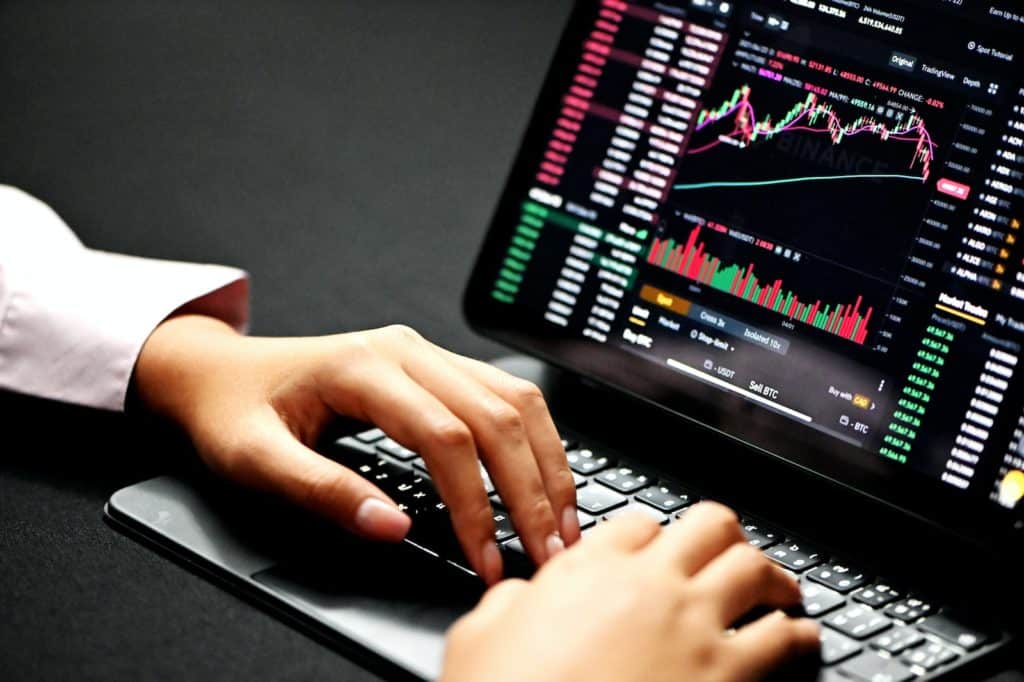Creare un Trading Desk: Dagli swap sui tassi d'interesse ai desk di trading in valuta estera

A trading desk is a central unit for executing trades across markets like equities, bonds, commodities, and foreign exchange. As of 2022, the global foreign exchange market sees daily volumes of over $6.6 trillion, highlighting the scale and importance of trading operations Modern trading desks are highly specialized—covering areas like equity trading, interest rate swaps, and commodity trading. A professional setup often includes 3–6 monitors, high-speed infrastructure, and real-time data systems
(Trade With The Pros)
Indice dei contenuti
- Tipi di Trading Desk
- Creare un Trading Floor
- Selezionare gli strumenti e le attrezzature giuste
- Stabilire le strategie di trading
- Requisiti normativi
- Conclusione
Tipi di Trading Desk
Esistono vari tipi di trading desk, ognuno specializzato in diversi strumenti e mercati finanziari. Alcuni dei trading desk più comuni includono:
- Desk di trading di swap sui tassi d'interesse: questi desk di trading sono specializzati in derivati sui tassi d'interesse, concentrandosi sul trading di titoli a reddito fisso, come i titoli di Stato e le obbligazioni societarie. Gestiscono le operazioni che riguardano gli swap sui tassi di interesse, che sono accordi tra due parti per scambiare pagamenti a tasso fisso con pagamenti a tasso variabile.
- Desk di trading di valuta estera: questi desk negoziano valute nel mercato globale dei cambi, con l'obiettivo di trarre profitto dalle fluttuazioni dei tassi di cambio.
- Desk di trading azionario: i trader di questi desk acquistano e vendono azioni in vari mercati azionari, cercando di capitalizzare i movimenti dei prezzi e le opportunità di trading.
- Desk di trading di materie prime: questi desk negoziano contratti futures per materie prime come il petrolio, l'oro e i prodotti agricoli.

Creare un Trading Floor
Un trading floor ben progettato è essenziale per un trading desk di successo. Ecco alcuni passi per creare un trading floor efficace:
- Scelga un luogo adatto: Trovi uno spazio con una buona illuminazione, distrazioni minime e spazio sufficiente per gli operatori, le attrezzature e altre risorse.
- Assicuri un'infrastruttura adeguata: Si assicuri che il trading floor disponga di connessioni elettriche, internet e telefoniche adeguate.
- Creare un layout funzionale: Progetta il trading floor per facilitare la comunicazione e la collaborazione tra i trader e il personale di supporto.
- Fornisca mobili confortevoli: Equipaggi la sala trading con sedie e scrivanie ergonomiche per ridurre la fatica e aumentare la produttività.
Selezionare gli strumenti e le attrezzature giuste
Prima di iniziare le operazioni, deve sviluppare una strategia di trading su misura per gli strumenti finanziari e i mercati specifici che vengono negoziati, come gli swap sui tassi di interesse, i futures sul tesoro e altri prodotti di investment banking. La strategia dovrebbe delineare gli obiettivi, la tolleranza al rischio e i metodi di trading preferiti dal trading desk. Consideri la possibilità di collaborare con trader esperti, analisti e altri partecipanti al mercato per perfezionare la strategia. I componenti chiave da considerare quando si stabiliscono le strategie di trading includono:
- Comprendere i mercati finanziari: Familiarizzare con il panorama dei mercati finanziari e con i vari strumenti finanziari negoziati, come i contratti futures, gli swap sui tassi d'interesse e i titoli a tasso variabile. L'acquisizione di dati di mercato e l'informazione sull'economia globale, la politica monetaria e gli eventi rilevanti che influenzano i mercati contribuiranno a informare le sue strategie di trading.
- Lavorare con le imprese di investimento e le istituzioni finanziarie: Stabilisca relazioni con banche d'investimento, operatori di mercato e altre istituzioni finanziarie che svolgono un ruolo significativo nei mercati in cui opera. Queste partnership possono fornire preziose intuizioni, risorse e supporto nella definizione delle sue strategie di trading. Utilizzi piattaforme come il Portale Collaborativo di InvestGlass per favorire una migliore comunicazione e collaborazione con i suoi partner.
- Sfruttare l'onboarding digitale: L'implementazione di un processo di onboarding semplificato è essenziale per attrarre e mantenere i clienti. La piattaforma Digital Onboarding di InvestGlass semplifica l'onboarding dei clienti, garantendo al contempo la conformità ai requisiti normativi.
- Analizzare le tendenze e i dati di mercato: Utilizzi i dati di mercato per valutare le tendenze e identificare potenziali opportunità di trading. Comprendere i fattori che influenzano i prezzi delle obbligazioni, ad esempio, può aiutare a guidare le sue strategie di trading sul reddito fisso. Utilizzi gli Strumenti di vendita e gli Strumenti di marketing di InvestGlass per raccogliere approfondimenti e rimanere informato sulle tendenze del mercato.
- Coinvolgere trader professionisti e partecipanti al mercato: Collabora con trader esperti, analisti e altri partecipanti al mercato per ottenere approfondimenti e perfezionare le sue strategie di trading. Sfrutta le loro conoscenze ed esperienze per comprendere meglio i vari metodi e tattiche di trading.
- Gestire i trade dei clienti: Sviluppare processi per gestire in modo efficiente le operazioni dei clienti, assicurando che i loro obiettivi di investimento siano allineati con le sue strategie di trading. Monitorare i loro portafogli e adattare le strategie, se necessario, per rispondere ai cambiamenti del mercato o della tolleranza al rischio dei clienti. La piattaforma di gestione del portafoglio di InvestGlass offre strumenti completi per gestire efficacemente i portafogli dei clienti.
- Automatizzare le attività e i flussi di lavoro: Utilizzi gli strumenti di automazione di InvestGlass per snellire le operazioni, automatizzare le attività di routine e ottimizzare i flussi di lavoro, aumentando l'efficienza e la produttività del suo trading desk.
- Valutare e regolare le strategie: Valutare regolarmente le prestazioni delle sue strategie di trading, esaminando i risultati delle operazioni eseguite e analizzando il loro impatto sui portafogli dei clienti. Apportare modifiche alle sue strategie, se necessario, per adattarsi alle mutevoli condizioni di mercato e mantenere un vantaggio competitivo sui mercati finanziari.
Incorporando queste considerazioni, sfruttando le soluzioni tecnologiche avanzate come InvestGlass e collaborando con i professionisti del settore, può creare strategie di trading ben informate ed efficaci, su misura per il focus e gli obiettivi del suo trading desk. Questo approccio completo posizionerà il suo trading desk per il successo nel mondo competitivo dei mercati finanziari.
Stabilire le strategie di trading
Prima di iniziare le operazioni, deve sviluppare una strategia di trading su misura per gli strumenti finanziari e i mercati specifici che vengono negoziati, come gli swap sui tassi di interesse, i futures sul tesoro e altri prodotti di investment banking. La strategia dovrebbe delineare gli obiettivi, la tolleranza al rischio e i metodi di trading preferiti dal trading desk. Consideri la possibilità di collaborare con trader esperti, analisti e altri partecipanti al mercato per perfezionare la strategia. I componenti chiave da considerare quando si stabiliscono le strategie di trading includono:
- Comprendere i mercati finanziari: Familiarizzare con il panorama dei mercati finanziari e con i vari strumenti finanziari negoziati, come i contratti futures, gli swap sui tassi di interesse e i titoli a tasso variabile. L'acquisizione di dati di mercato e l'informazione sull'economia globale, la politica monetaria e gli eventi rilevanti che influenzano i mercati contribuiranno a informare le sue strategie di trading.
- Lavorare con le imprese di investimento e le istituzioni finanziarie: Stabilisca relazioni con banche d'investimento, operatori di mercato e altre istituzioni finanziarie che svolgono un ruolo significativo nei mercati in cui opera. Queste partnership possono fornire preziose intuizioni, risorse e supporto nella definizione delle sue strategie di trading.
- Analizzare le tendenze e i dati di mercato: Utilizzi i dati di mercato per valutare le tendenze e identificare potenziali opportunità di trading. Comprendere i fattori che influenzano i prezzi delle obbligazioni, ad esempio, può aiutare a guidare le sue strategie di trading sul reddito fisso.
- Coinvolgere trader professionisti e partecipanti al mercato: Collabora con trader esperti, analisti e altri partecipanti al mercato per ottenere approfondimenti e perfezionare le sue strategie di trading. Sfrutta le loro conoscenze ed esperienze per comprendere meglio i vari metodi e tattiche di trading.
- Gestire i trade dei clienti: Sviluppare processi per gestire in modo efficiente le operazioni dei clienti, assicurando che i loro obiettivi di investimento siano allineati con le sue strategie di trading. Monitorare i loro portafogli e adattare le strategie, se necessario, per rispondere ai cambiamenti del mercato o alla tolleranza al rischio dei clienti.
- Valutare e regolare le strategie: Valutare regolarmente le prestazioni delle sue strategie di trading, esaminando i risultati delle operazioni eseguite e analizzando il loro impatto sui portafogli dei clienti. Apportare modifiche alle sue strategie, se necessario, per adattarsi alle mutevoli condizioni di mercato e mantenere un vantaggio competitivo sui mercati finanziari.
Incorporando queste considerazioni e collaborando con i professionisti del settore, può creare strategie di trading ben informate ed efficaci, su misura per il focus e gli obiettivi del suo trading desk.
Requisiti normativi
I desk di trading devono attenersi a vari requisiti e linee guida normative, che possono variare a seconda della giurisdizione e dei prodotti finanziari negoziati. Alcune considerazioni normative chiave includono:
- Licenze e registrazioni: Si assicuri che il trading desk e i suoi trader abbiano le licenze e le registrazioni necessarie per operare legalmente.
- Conformità alle norme e ai regolamenti: Familiarizzare con le norme e i regolamenti applicabili che disciplinano le attività di trading del suo trading desk, come i requisiti di rendicontazione, i requisiti di capitale e le restrizioni al trading.
- Mantenere registri accurati: Mantenga registri accurati e aggiornati di tutte le attività di trading, compresi i dettagli del commercio, le comunicazioni e altre informazioni rilevanti.
- Implementare i controlli interni: Stabilisce procedure e controlli per assicurare la conformità alle normative, prevenire la manipolazione del mercato e proteggere i beni dei clienti.
- Rimanga informato: Si tenga aggiornato sulle modifiche normative e sulle best practice del settore, e aggiusti di conseguenza le politiche e le procedure del suo trading desk.

Conclusione
La creazione di un trading desk può essere un'impresa impegnativa ma gratificante. Prendendo in considerazione i vari tipi di trading desk, creando un trading floor funzionale, selezionando gli strumenti e le attrezzature giuste, stabilendo strategie di trading efficaci e rispettando i requisiti normativi, può creare un'operazione di trading di successo che naviga nel complesso mondo dei mercati finanziari.
Un aspetto essenziale della gestione di un trading desk è avere un solido sistema di CRM e di gestione del portafoglio. InvestGlass è una soluzione eccellente per ottimizzare le operazioni del suo trading desk. Con InvestGlass, può gestire le relazioni con i clienti, tracciare le operazioni, monitorare i portafogli e garantire la conformità normativa, il tutto attraverso una piattaforma facile da usare. La piattaforma offre anche strumenti di automazione e analisi avanzate, che le consentono di ottimizzare le strategie di trading e di migliorare il processo decisionale.
Si ricordi che l'apprendimento continuo, l'adattamento e la collaborazione con altri professionisti, nonché l'utilizzo di soluzioni tecnologiche come InvestGlass, la aiuteranno a rimanere all'avanguardia nel mondo competitivo del trading.